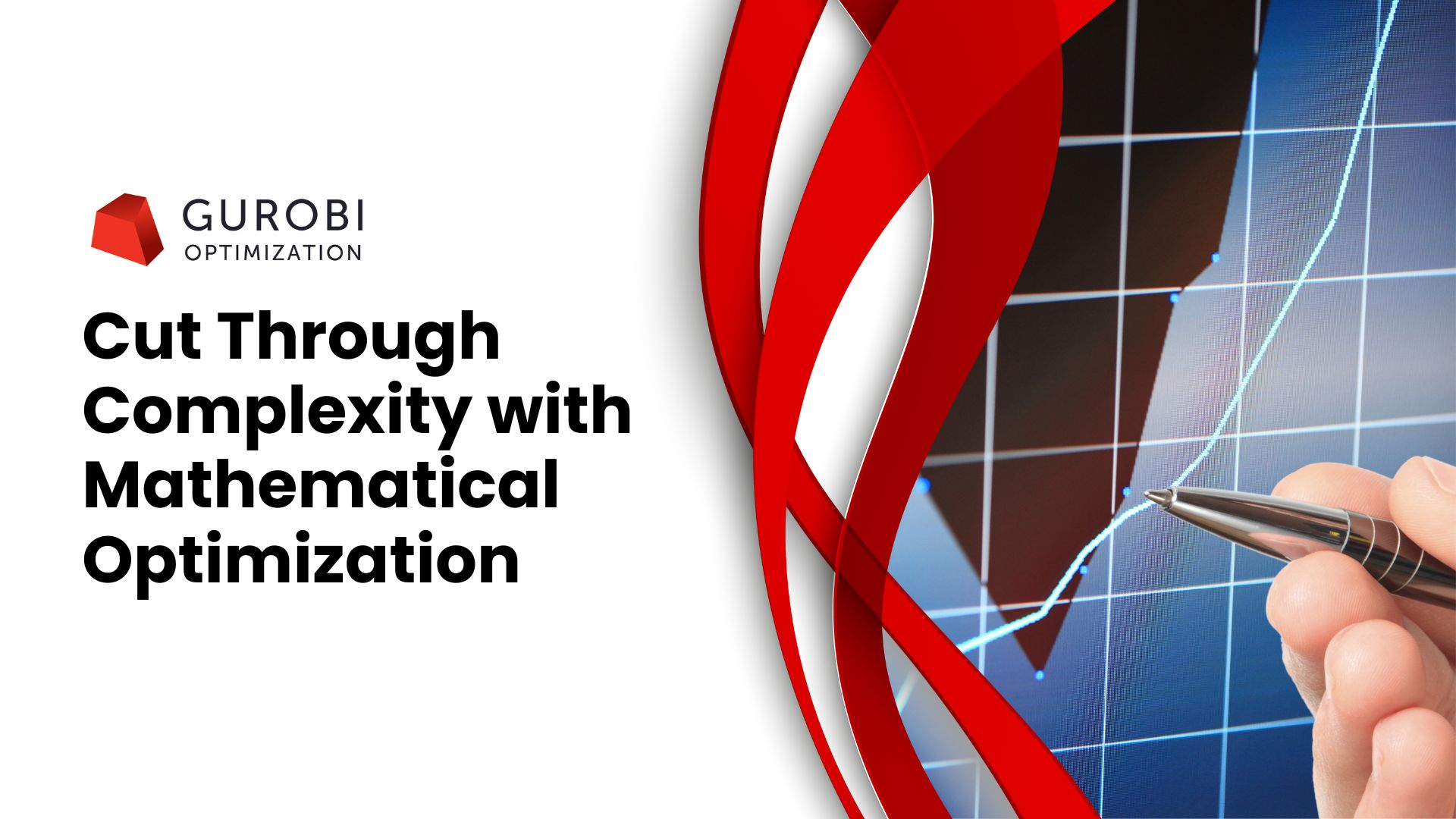In the oil and gas industry, refinery planning stands as a critical component that can make or break operational efficiency and profitability. As the industry grapples with fluctuating market demands, stringent environmental regulations, and the need for cost-effective production, the role of advanced decision-making tools becomes increasingly vital. CPLEX and mathematical optimization are powerful allies in the quest for optimal refinery planning and operations.
The Refinery Planning Problem: Challenges Faced by the Oil and Gas Industry
Refinery planning is a complex puzzle with numerous moving parts. One of the primary challenges is the need to balance production with market demand while maximizing profitability. Refineries must determine the optimal mix of crude oil feedstocks, adjust processing units to produce the right product slate, and manage inventory levels – all while considering market prices, transportation costs, and contractual obligations.
Another significant hurdle is the need to comply with increasingly stringent environmental regulations. Refineries must minimize emissions and waste production while still meeting production targets. This balancing act requires sophisticated decision-making processes that can simultaneously consider multiple constraints and objectives.
The volatility of the oil market adds another layer of complexity. Crude oil prices and product demand can fluctuate rapidly, requiring refineries to be agile in their planning and able to quickly adapt their operations to changing market conditions. This necessitates robust forecasting capabilities and the ability to rapidly generate and evaluate multiple scenarios.
Maintenance scheduling is yet another critical challenge. Refineries must plan for routine maintenance and unexpected shutdowns while minimizing the impact on production and meeting customer commitments. This requires careful coordination of resources and timing to optimize overall refinery performance.
CPLEX and Mathematical Optimization: A Powerful Solution
CPLEX, IBM’s optimization software, coupled with mathematical optimization techniques, offers a potent solution to these complex challenges. At its core, mathematical optimization is about finding the best solution from a set of possible alternatives, given a set of constraints and objectives. This approach is perfectly suited to the multifaceted nature of refinery planning.
Mathematical optimization models can capture the intricate relationships between various refinery processes, market conditions, and business objectives. These models can then be solved using CPLEX’s advanced algorithms to find optimal solutions that balance multiple, often conflicting, goals.
For instance, a refinery can use CPLEX to determine the optimal crude oil blend that maximizes profit while meeting product specifications and environmental constraints. The model can consider factors such as crude oil prices, processing costs, product yields, and market demand to find the best possible solution.
CPLEX’s ability to handle large-scale, complex problems makes it particularly well-suited for refinery planning. It can efficiently solve models with thousands of variables and constraints, allowing for highly detailed and accurate representations of refinery operations.
Moreover, CPLEX’s scenario analysis capabilities enable refineries to evaluate multiple “what-if” scenarios quickly. This feature is invaluable in an industry where market conditions can change rapidly, allowing planners to assess different strategies and make informed decisions in real-time.
Technical Aspects of Implementing CPLEX and Mathematical Optimization
From a technical standpoint, implementing CPLEX and mathematical optimization for refinery planning involves several key steps. First, the refinery’s operations must be modeled mathematically. This process requires a deep understanding of both the refinery processes and mathematical modeling techniques.
The model typically includes:
- Decision variables representing operational choices (e.g., crude oil quantities, processing unit settings)
- Constraints that reflect physical limitations, quality requirements, and regulatory restrictions
- An objective function that quantifies the goal (e.g., maximize profit, minimize costs)
Once the model is formulated, it can be implemented using CPLEX’s optimization modeling language or integrated with existing systems through APIs. CPLEX offers various solving algorithms, including linear programming, mixed-integer programming, and quadratic programming, allowing for the selection of the most appropriate method based on the problem structure.
One of CPLEX’s strengths is its ability to handle non-linear relationships, which are common in refinery processes. For example, the relationship between crude oil properties and product yields is often non-linear. CPLEX can tackle these complexities using techniques such as piecewise linear approximations or specialized non-linear solvers.
Another critical technical aspect is data integration. Effective refinery planning requires real-time data from various sources, including process control systems, market data feeds, and enterprise resource planning systems. CPLEX can be integrated with these data sources to ensure that optimization models are always working with the most up-to-date information.
Business Aspects of Applying CPLEX and Mathematical Programming
From a business perspective, the implementation of CPLEX and mathematical optimization represents a significant shift in how refinery planning decisions are made. It moves the process from one often based on heuristics and experience to one grounded in data-driven, quantitative analysis.
This shift can lead to more confident decision-making, as planners can back up their choices with robust analytical evidence. It also allows for more consistent planning processes across different refineries within the same organization, as the same optimization models can be applied with local adjustments.
The implementation of these advanced planning tools often requires a cultural shift within the organization. It’s crucial to involve key stakeholders early in the process and provide training to ensure that the tools are understood and trusted. The goal is not to replace human expertise but to augment it, allowing planners to focus on strategic decisions while the optimization tools handle the complex calculations.
From a financial standpoint, the investment in CPLEX and mathematical optimization should be viewed as a strategic initiative. While there may be upfront costs associated with software licenses, model development, and training, the potential returns in terms of improved efficiency and profitability can be substantial.
Need CPLEX Training? Enroll for
Potential ROI and Benefits
The implementation of CPLEX and mathematical optimization in refinery planning can yield significant returns on investment. While the exact figures will vary depending on the size and complexity of the refinery, industry reports have shown that advanced planning and scheduling systems can lead to improvements in several key areas:
- Margin Improvement: By optimizing crude selection, processing conditions, and product blending, refineries can increase their profit margins. Even a small percentage improvement in margins can translate to millions of dollars in additional profit annually.
- Inventory Reduction: More accurate planning allows refineries to operate with lower inventory levels of both crude oil and finished products. This reduction in working capital can free up substantial funds for other investments.
- Increased Throughput: Optimized planning can identify opportunities to increase refinery throughput without major capital investments. This can lead to higher utilization rates and improved overall efficiency.
- Improved Environmental Performance: By explicitly considering environmental constraints in the optimization model, refineries can reduce emissions and waste production, potentially avoiding costly fines and improving their environmental reputation.
- Enhanced Agility: The ability to quickly run multiple scenarios allows refineries to respond more rapidly to market changes, capitalizing on short-term opportunities and mitigating risks.
- Better Resource Allocation: Optimized maintenance scheduling can lead to improved equipment reliability and reduced downtime, resulting in significant cost savings.
While the initial investment in CPLEX and mathematical optimization tools may be substantial, the potential for ongoing savings and revenue improvements makes for a compelling business case.
Cresco International: Your Partner in Decision Optimization
As businesses in the oil and gas industry look to harness the power of CPLEX and mathematical optimization for refinery planning, they need a partner with deep expertise in both the technical and business aspects of these solutions. This is where Cresco International, an IBM trusted partner and consulting firm specializing in decision optimization, comes into play.
Cresco International brings a wealth of experience in developing customized decision optimization solutions across various industries, with a particular focus on the complex challenges faced by oil and gas companies. Their team of expert consultants combines in-depth knowledge of CPLEX and mathematical programming with a nuanced understanding of refinery operations and business dynamics.
When working with a refinery, Cresco International takes a holistic approach to implementing decision optimization solutions. They begin by conducting a thorough analysis of the refinery’s current planning processes, identifying pain points and opportunities for improvement. This initial assessment allows them to tailor their solution to the specific needs and goals of the organization.
Cresco’s expertise extends beyond mere software implementation. They work closely with refinery planners and management to develop comprehensive mathematical models that accurately represent the intricacies of the refinery’s operations. These models are not off-the-shelf solutions but are custom-built to reflect the unique characteristics of each refinery, including its processing units, crude slate, product mix, and market conditions.
One of Cresco International’s key strengths is their ability to bridge the gap between technical optimization capabilities and practical business applications. They understand that the most sophisticated model is only valuable if it can be effectively integrated into the refinery’s decision-making processes. To this end, they focus on creating user-friendly interfaces and reporting tools that allow planners to easily interact with the optimization models and interpret results.
Cresco also recognizes the importance of knowledge transfer and capacity building. They provide comprehensive training programs to ensure that refinery staff can effectively use and maintain the optimization tools. This approach ensures that the benefits of the solution continue long after the initial implementation.
Moreover, Cresco International’s commitment doesn’t end with the initial deployment. They offer ongoing support and optimization services, helping refineries continually refine their models and adapt to changing market conditions. This long-term partnership approach ensures that refineries can maximize the value of their investment in decision optimization technologies over time.
By leveraging Cresco International’s expertise, refineries can accelerate their journey towards data-driven, optimized planning processes. The combination of Cresco’s industry knowledge, technical prowess, and commitment to client success makes them an ideal partner for any refinery looking to transform their planning capabilities and gain a competitive edge in the market.
Want to Buy CPLEX? Visit
Conclusion
In an industry where margins are tight and the stakes are high, the application of CPLEX and mathematical optimization to refinery planning represents a game-changing opportunity. These advanced tools offer refineries the ability to navigate complex decisions with greater precision, agility, and confidence.
The challenges faced by the oil and gas industry – from volatile markets to stringent regulations – are not going away. However, with the right tools and expertise, these challenges can be transformed into opportunities for optimization and growth. CPLEX and mathematical optimization, particularly when implemented with the support of experienced partners like Cresco International, provide a powerful framework for tackling these challenges head-on.
As we look to the future, it’s clear that the most successful refineries will be those that embrace these advanced planning technologies. By doing so, they position themselves to operate more efficiently, respond more quickly to market changes, and ultimately, to thrive in an increasingly competitive global market.
The journey towards optimized refinery planning may be complex, but with the right tools and partners, it’s a journey that promises substantial rewards. As the industry continues to evolve, those who harness the power of CPLEX and mathematical optimization will be well-positioned to lead the way into a more efficient, profitable, and sustainable future.











